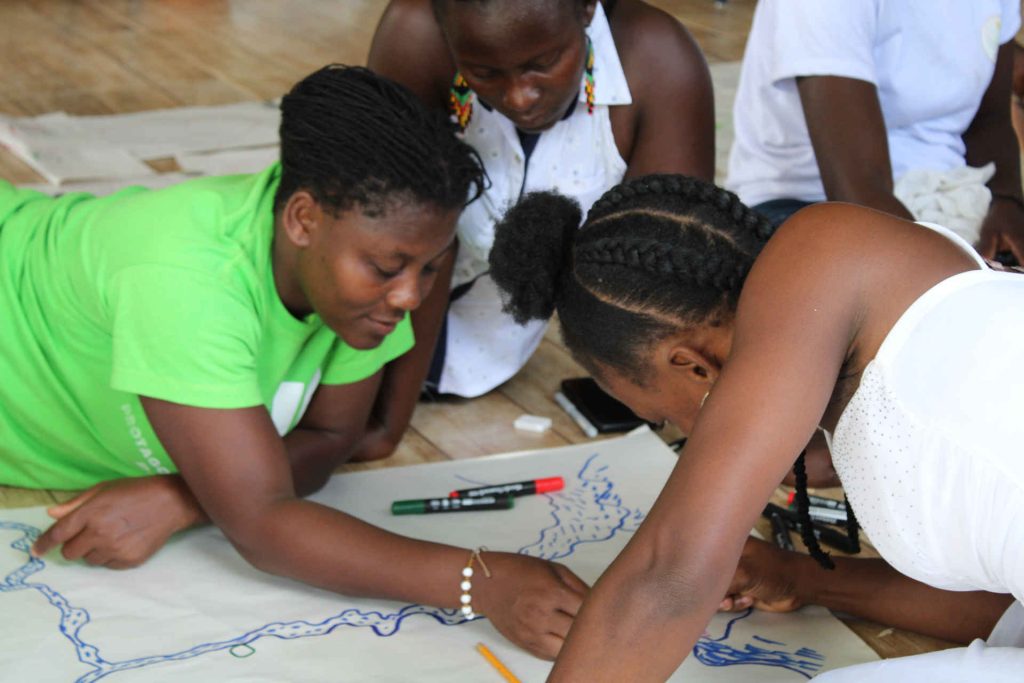On Colombia’s Pacific Coast, Buenaventura is a region of majority Afrodescendent and indigenous people, shaped by a long history of civilian resistance. It is one of the regions that has been most deeply impacted by the armed conflict. Currently it houses Colombia’s largest port, yet the economic gains have not been shared with its inhabitants, wherefore young people are more easily recruited into the armed conflict. Because of the long trajectory of violence, it was one of the regions prioritised in the 2016 Peace Accords. However, the implementation has fallen short. This has left communities to survive in the midst of an escalating social and armed conflict, resulting from the actions of armed groups and exclusionary policies that increase their collective vulnerability to harm.
The specific aims of this research project were to:
- Map vulnerability to physical harm of Afro-descendent and indigenous communities in Buenaventura, Colombia.
- Examine how community members experience this vulnerability while navigating their specific geographical contexts.
- Explore ways in which community members have built strategies collectively to respond to and mitigate community and individual vulnerability.

RESEARCH TEAM
- Enrique Chimonja, FOR Peace Presence, Colombia (principal investigator)
- Manuel Müller, FOR Peace Presence, Colombia (principal investigator)
- Kati Hinman, FOR Peace Presence, Colombia (co-investigator)
- Roberto Rodríguez, Colectivo ANSUR (co-investigator)
WEBSITE AND SOCIAL MEDIA
- Website: www.peacepresence.org
- Twitter: @Peace_Presence
- Instagram: @peace_presence
- Facebook: @PeacePresence
RESEARCH ACTIVITIES
In order to achieve Aim 1 (“Map vulnerability to physical harm of Afro-descendent and indigenous communities in Buenaventura, Colombia”) we conducted community workshops and mapping exercises in 6 communities:
- The Afrodescendent community of La Esperanza;
- The Afrodescendent women’s collective AINI of the Naya River;
- The indigenous community Santa Rosa de Guayacán;
- The Afrodescendent community of the Puente Nayero humanitarian space;
- The LGBTQIA2S+ and Afrodescendent community of Punta Icaco humanitarian space;
- The indigenous community of Valledupar.
These workshops focused on their collective identity and the impact of violence on their lives and the different actors that operate in their territories and influence violence. People worked in groups to make maps or representations of their communities and talk about the assets and vulnerabilities within their communities.
In order to achieve Aim 2 (“Examine how community members experience this vulnerability while navigating their specific geographical contexts”) we conducted focus groups with different sub populations to understand how people navigate violence and keep themselves safe at different intersects of identity:
- Rural Afrodescendent women;
- Urban Afrodescendent women;
- Rural indigenous women;
- LGBTQIA+ young people;
- Urban men;
- Rural young people;
- Social leaders and human rights defenders.

RESEARCH FINDINGS
At the community workshops for Aim 1, we heard repeatedly from indigenous and Afrodescendent participants how important the relationship with the land is to their cultural identities, and how displacement threatens this. For indigenous participants in particular, the greatest fear for many was losing their lands. We also heard about how communities see a link between their stewardship of natural resources and the violence they have experienced because of external interests in extracting those resources.
In the focus groups for Aim 2, we saw that many of the protection strategies being employed by people at different intersects of identity were collective, such as travelling to unsafe places in groups, identifying safe houses, developing relationships with neighbours to look out for each other in the neighbourhood, and discussing travel plans with family and loved ones. We were surprised to note that despite known risks of violence and mistreatment at home for LGBTQ+ people, in our focus group only one participant noted home as an unsafe space, although others commented that feeling safe at home was something they had worked to achieve over time and by being selective in who they lived with.
For our Aim 3 discussions, we heard about how collective strategies like the Puente Nayero humanitarian space in urban Buenaventura and the Humanitarian Shelter of the Wounaan Phobor community provided the safest conditions for residents that they saw available. While residents did not say that they ever felt completely safe, the social cohesion and political organising of these spaces were their most effective protection. These spaces are both supported through internal organising by residents but also by partnerships with external organisations like CONPAZCOL, and through national and international advocacy that bring visibility and international accompaniment to the initiatives.





